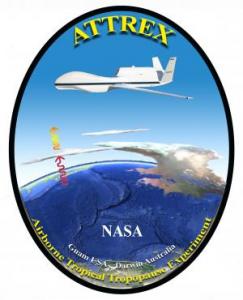
Airborne Tropical TRopopause EXperiment
Stratospheric water vapor has large impacts on the earth’s climate and energy budget. Future changes in stratospheric humidity and ozone concentration in response to changing climate are significant climate feedbacks. While the tropospheric water vapor climate feedback is well represented in global models, predictions of future changes in stratospheric humidity are highly uncertain because of gaps in our understanding of physical processes occurring in the region of the atmosphere that controls the composition of the stratosphere, the Tropical Tropopause Layer. Uncertainties in the Tropical Tropopause Layer region’s chemical composition also limit our ability to predict future changes in stratospheric ozone. By improving our understanding of the processes that control how much water vapor gets into this region from lower in the atmosphere, the ATTREX investigation has directly addressed these uncertainties in our knowledge of the climate system.
 The instruments have provided measurements to trace the movement of reactive halogen-containing compounds and other important chemical species, the size and shape of cirrus cloud particles, water vapor, and winds in three dimensions through the Tropical Tropopause Layer. In particular, bromine-containing gases were measured to improve our understanding of stratospheric ozone. ATTREX consisted of four NASA Global Hawk Uninhabited Aerial System (UAS) campaigns deployed from NASA’s Dryden Flight Research Center (DFRC) in Edwards, CA, Guam, Hawaii, and Darwin, Australia in Boreal summer, winter, fall, and summer, respectively.
The instruments have provided measurements to trace the movement of reactive halogen-containing compounds and other important chemical species, the size and shape of cirrus cloud particles, water vapor, and winds in three dimensions through the Tropical Tropopause Layer. In particular, bromine-containing gases were measured to improve our understanding of stratospheric ozone. ATTREX consisted of four NASA Global Hawk Uninhabited Aerial System (UAS) campaigns deployed from NASA’s Dryden Flight Research Center (DFRC) in Edwards, CA, Guam, Hawaii, and Darwin, Australia in Boreal summer, winter, fall, and summer, respectively.
The investigation filled several significant gaps in atmospheric science identified in the NASA Decadal Survey involving climate change, stratospheric ozone, and stratosphere-troposphere exchange.
Principal Investigator: Eric Jensen
NASA Ames Research Center, Moffett Field, CA
Project Manager: Dave Jordan
NASA Ames Research Center, Moffett Field, CA
Mission Manager: Anthony Guillory
Langley Research Center (LaRC), Hampton, VA
